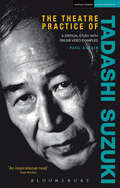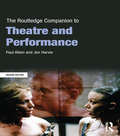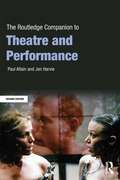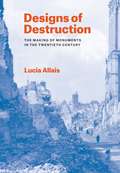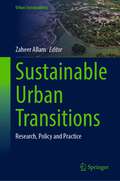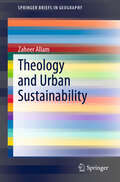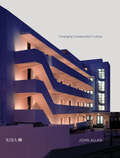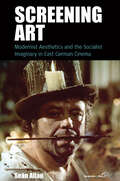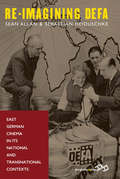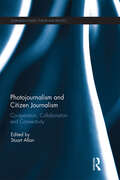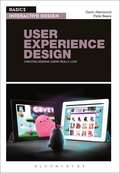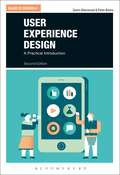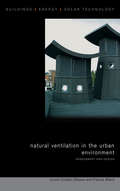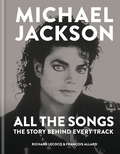- Table View
- List View
The Theatre Practice of Tadashi Suzuki: A critical study with DVD examples (Performance Books)
by Paul AllainA lively, critical study of one of the most important innovators, thinkers and directors in contemporary world theatre: Tadashi Suzuki. This book explores Suzuki's theatre practice and contains a DVD with practical Suzuki Method actor-training examples.For over forty years Tadashi Suzuki has been a unique and vital force in both Japanese and Western theatre, creating and directing many internationally acclaimed productions including his most famous production, The Trojan Women, which toured throughout the world. Dr Paul Allain, an experienced practitioner of the Suzuki Method, re-evaluates Suzuki's work, his development towards an international theatre aesthetic and his impact on performance all over the world. The DVD covers an actor training session (featuring both novices and an experienced practitioner with over ten years of Suzuki training) showing the physical moves. "Captures aspects of Suzuki's work with an insider's grasp of theatre-making - an informative and inspirational read" From the foreword by Katie Mitchell.
The Routledge Companion to Theatre and Performance (Routledge Companions)
by Paul Allain Jen HarvieWhat is theatre? What is performance? What connects them and how are they different? What events, people, practices and ideas have shaped theatre and performance in the twentieth and twenty-first century? The Routledge Companion to Theatre and Performance offers some answers to these big questions. It provides an analytical, informative and engaging introduction to important people, companies, events, concepts and practices that have defined the complementary fields of theatre and performance studies. This fully updated second edition contains three easy to use alphabetized sections including over 120 revised entries on topics and people ranging from performance artist Ron Athey, to directors Vsevold Meyerhold and Robert Wilson, megamusicals , postdramatic theatre and documentation. Each entry includes crucial historical and contextual information, extensive cross-referencing, detailed analysis and an annotated bibliography. The Routledge Companion to Theatre and Performance is a perfect reference guide for the keen student.
The Routledge Companion to Theatre and Performance (Routledge Companions)
by Paul Allain Jen HarvieWhat is theatre? What is performance? What connects them and how are they different? What events, people, practices and ideas have shaped theatre and performance in the twentieth and twenty-first century? The Routledge Companion to Theatre and Performance offers some answers to these big questions. It provides an analytical, informative and engaging introduction to important people, companies, events, concepts and practices that have defined the complementary fields of theatre and performance studies. This fully updated second edition contains three easy to use alphabetized sections including over 120 revised entries on topics and people ranging from performance artist Ron Athey, to directors Vsevold Meyerhold and Robert Wilson, megamusicals , postdramatic theatre and documentation. Each entry includes crucial historical and contextual information, extensive cross-referencing, detailed analysis and an annotated bibliography. The Routledge Companion to Theatre and Performance is a perfect reference guide for the keen student.
The Routledge Companion To Theatre And Performance (PDF)
by Paul Allain Jen Harvie* What is theatre? * What is performance? * What connects them and how are they different? * What events, people, practices and ideas have shaped theatre and performance in the twentieth and twenty-first century? The Routledge Companion to Theatre and Performance offers some answers to these big questions. It provides an analytical, informative and engaging introduction to important people, companies, events, concepts and practices that have defined the complementary fields of theatre and performance studies. This fully updated second edition contains three easy to use alphabetized sections including over 120 revised entries on topics and people ranging from performance artist Ron Athey, to directors Vsevold Meyerhold and Robert Wilson, megamusicals , postdramatic theatre and documentation. Each entry includes crucial historical and contextual information, extensive cross-referencing, detailed analysis and an annotated bibliography.
Designs of Destruction: The Making of Monuments in the Twentieth Century
by Lucia AllaisThe twentieth century was the most destructive in human history, but from its vast landscapes of ruins was born a new architectural type: the cultural monument. In the wake of World War I, an international movement arose which aimed to protect architectural monuments in large numbers, and regardless of style, hoping not only to keep them safe from future conflicts, but also to make them worthy of protection from more quotidian forms of destruction. This movement was motivated by hopeful idealism as much as by a pragmatic belief in bureaucracy. An evolving group—including architects, intellectuals, art historians, archaeologists, curators, and lawyers—grew out of the new diplomacy of the League of Nations. During and after World War II, it became affiliated with the Allied Military Government, and was eventually absorbed by the UN as UNESCO. By the 1970s, this organization had begun granting World Heritage status to a global register of significant sites—from buildings to bridges, shrines to city centers, ruins to colossi. Examining key episodes in the history of this preservation effort—including projects for the Parthenon, for the Cathedral of St-Lô, the temples of Abu Simbel, and the Bamyian Buddahs —Lucia Allais demonstrates how the group deployed the notion of culture to shape architectural sites, and how architecture in turn shaped the very idea of global culture. More than the story of an emergent canon, Designs of Destruction emphasizes how the technical project of ensuring various buildings’ longevity jolted preservation into establishing a transnational set of codes, values, practices. Yet as entire nations’ monumental geographies became part of survival plans, Allais also shows, this paradoxically helped integrate technologies of destruction—from bombs to bulldozers—into cultural governance. Thus Designs of Destruction not only offers a fascinating narrative of cultural diplomacy, based on extensive archival findings; it also contributes an important new chapter in the intellectual history of modernity by showing the manifold ways architectural form is charged with concretizing abstract ideas and ideals, even in its destruction.
Designs of Destruction: The Making of Monuments in the Twentieth Century
by Lucia AllaisThe twentieth century was the most destructive in human history, but from its vast landscapes of ruins was born a new architectural type: the cultural monument. In the wake of World War I, an international movement arose which aimed to protect architectural monuments in large numbers, and regardless of style, hoping not only to keep them safe from future conflicts, but also to make them worthy of protection from more quotidian forms of destruction. This movement was motivated by hopeful idealism as much as by a pragmatic belief in bureaucracy. An evolving group—including architects, intellectuals, art historians, archaeologists, curators, and lawyers—grew out of the new diplomacy of the League of Nations. During and after World War II, it became affiliated with the Allied Military Government, and was eventually absorbed by the UN as UNESCO. By the 1970s, this organization had begun granting World Heritage status to a global register of significant sites—from buildings to bridges, shrines to city centers, ruins to colossi. Examining key episodes in the history of this preservation effort—including projects for the Parthenon, for the Cathedral of St-Lô, the temples of Abu Simbel, and the Bamyian Buddahs —Lucia Allais demonstrates how the group deployed the notion of culture to shape architectural sites, and how architecture in turn shaped the very idea of global culture. More than the story of an emergent canon, Designs of Destruction emphasizes how the technical project of ensuring various buildings’ longevity jolted preservation into establishing a transnational set of codes, values, practices. Yet as entire nations’ monumental geographies became part of survival plans, Allais also shows, this paradoxically helped integrate technologies of destruction—from bombs to bulldozers—into cultural governance. Thus Designs of Destruction not only offers a fascinating narrative of cultural diplomacy, based on extensive archival findings; it also contributes an important new chapter in the intellectual history of modernity by showing the manifold ways architectural form is charged with concretizing abstract ideas and ideals, even in its destruction.
Designs of Destruction: The Making of Monuments in the Twentieth Century
by Lucia AllaisThe twentieth century was the most destructive in human history, but from its vast landscapes of ruins was born a new architectural type: the cultural monument. In the wake of World War I, an international movement arose which aimed to protect architectural monuments in large numbers, and regardless of style, hoping not only to keep them safe from future conflicts, but also to make them worthy of protection from more quotidian forms of destruction. This movement was motivated by hopeful idealism as much as by a pragmatic belief in bureaucracy. An evolving group—including architects, intellectuals, art historians, archaeologists, curators, and lawyers—grew out of the new diplomacy of the League of Nations. During and after World War II, it became affiliated with the Allied Military Government, and was eventually absorbed by the UN as UNESCO. By the 1970s, this organization had begun granting World Heritage status to a global register of significant sites—from buildings to bridges, shrines to city centers, ruins to colossi. Examining key episodes in the history of this preservation effort—including projects for the Parthenon, for the Cathedral of St-Lô, the temples of Abu Simbel, and the Bamyian Buddahs —Lucia Allais demonstrates how the group deployed the notion of culture to shape architectural sites, and how architecture in turn shaped the very idea of global culture. More than the story of an emergent canon, Designs of Destruction emphasizes how the technical project of ensuring various buildings’ longevity jolted preservation into establishing a transnational set of codes, values, practices. Yet as entire nations’ monumental geographies became part of survival plans, Allais also shows, this paradoxically helped integrate technologies of destruction—from bombs to bulldozers—into cultural governance. Thus Designs of Destruction not only offers a fascinating narrative of cultural diplomacy, based on extensive archival findings; it also contributes an important new chapter in the intellectual history of modernity by showing the manifold ways architectural form is charged with concretizing abstract ideas and ideals, even in its destruction.
Designs of Destruction: The Making of Monuments in the Twentieth Century
by Lucia AllaisThe twentieth century was the most destructive in human history, but from its vast landscapes of ruins was born a new architectural type: the cultural monument. In the wake of World War I, an international movement arose which aimed to protect architectural monuments in large numbers, and regardless of style, hoping not only to keep them safe from future conflicts, but also to make them worthy of protection from more quotidian forms of destruction. This movement was motivated by hopeful idealism as much as by a pragmatic belief in bureaucracy. An evolving group—including architects, intellectuals, art historians, archaeologists, curators, and lawyers—grew out of the new diplomacy of the League of Nations. During and after World War II, it became affiliated with the Allied Military Government, and was eventually absorbed by the UN as UNESCO. By the 1970s, this organization had begun granting World Heritage status to a global register of significant sites—from buildings to bridges, shrines to city centers, ruins to colossi. Examining key episodes in the history of this preservation effort—including projects for the Parthenon, for the Cathedral of St-Lô, the temples of Abu Simbel, and the Bamyian Buddahs —Lucia Allais demonstrates how the group deployed the notion of culture to shape architectural sites, and how architecture in turn shaped the very idea of global culture. More than the story of an emergent canon, Designs of Destruction emphasizes how the technical project of ensuring various buildings’ longevity jolted preservation into establishing a transnational set of codes, values, practices. Yet as entire nations’ monumental geographies became part of survival plans, Allais also shows, this paradoxically helped integrate technologies of destruction—from bombs to bulldozers—into cultural governance. Thus Designs of Destruction not only offers a fascinating narrative of cultural diplomacy, based on extensive archival findings; it also contributes an important new chapter in the intellectual history of modernity by showing the manifold ways architectural form is charged with concretizing abstract ideas and ideals, even in its destruction.
Sustainable Urban Transitions: Research, Policy and Practice (Urban Sustainability)
by Zaheer AllamThis book aims to explore how sustainability transitions can be explored in current and future cities and how research and policy approaches can be applied to change urban life as we know it, hence aligning the two thematic of urban science and future science, for achieving deep decarbonization. On this, the discourse on philosophy, ethics, and morality appertaining to sustainable cities and urban transitions, across disciplines, are also welcomed as it provides a deeper understanding of humanity in future scenarios. Chapter 08 is available open access under a Creative Commons Attribution 4.0 International License via link.springer.com.
Theology and Urban Sustainability (SpringerBriefs in Geography)
by Zaheer AllamEven though theology does provide interesting and important contributions to ethics that laid the foundation of our modern societies, this book looks at exploring how theology has impacted on urban morphology and has led to questionable unsustainable practices which impacts on both climate and societal living standards. This is seen as being accelerated with the impacts of climate change coupled with increasing urbanisation rates that stresses on contemporary notions and foundations, as initially sparked by religion. Through an argumentative style, the author sets forth to explore the ethics of religious dogmas in a rapidly urbanising world that is stressed by increasing consumption from a booming demographic.
Berthold Lubetkin: Architecture And The Tradition Of Progress (Twentieth Century Architects)
by John AllanThis book presents a compact and compelling account of the life and work of Berthold Lubetkin (1901-1990), widely regarded as the outstanding architect of his generation to practise in England. It explores the key themes, achievements and setbacks of his career, drawing from the author’s twenty-year personal friendship with Lubetkin himself, from discussions with former colleagues, and from his direct experience of working with many of Lubetkin’s buildings as a conservation architect. The study reveals the significance of Lubetkin’s Russian origins and European travels, re-assesses his prime work of the 1930s and charts the extensive output of his often-overlooked post-war career. It also considers Lubetkin’s legacy in the later work of his key associates, several of whom became significant architects in their own right. Lubetkin is a legendary figure in architectural circles, while still remaining slightly mysterious and misunderstood. The author shines new light on the man and his ideas, and assesses his unique place in modern architectural history. Illustrations include original black & white images as well as high-quality colour studies of the buildings as they are now. A complete List of Works and published commentaries also provide a valuable source of reference.
Revaluing Modern Architecture: Changing conservation culture
by John AllanThe conservation of our Modern architectural heritage is a subject of vehement debate. When do buildings become old or significant enough to warrant special heritage status and protection? Should Modern listed buildings be treated differently from those of earlier periods? And what does all this mean for building users and owners, who might be better served if their buildings were less authentic, but more comfortable and usable? Presenting a clear line of sight through these complex questions, this book explores the conservation, regeneration and adaptive re-use of Modern architecture. It provides a general grounding in the field, its recent history and current development, including chapters on authenticity, charters, listing and protection. Case studies drawing on the author’s extensive practical experience offer valuable lessons learnt in the conservation of Modern heritage buildings. Looking beyond the specialist field of ‘elite’ heritage, Revaluing Modern Architecture also considers the changing culture of conservation for ‘sub-iconic’ buildings in relation to de-carbonisation and the climate emergency. It suggests how revaluing the vast legacy of modern architecture can help to promote a more sustainable future. Features leading conservation projects, such as the celebrated Penguin Pool at London Zoo, Finsbury Health Centre by Lubetkin & Tecton and Wells Coates’ Isokon (Lawn Road) Flats, as well as previously unpublished projects. Analyses key Modern conservation controversies of recent years Illustrated with over 160 photos and drawings. An essential primer for architectural students and practitioners, academics, those employed in conservation and planning, property owners, developers, surveyors and building managers.
Revaluing Modern Architecture: Changing conservation culture
by John AllanThe conservation of our Modern architectural heritage is a subject of vehement debate. When do buildings become old or significant enough to warrant special heritage status and protection? Should Modern listed buildings be treated differently from those of earlier periods? And what does all this mean for building users and owners, who might be better served if their buildings were less authentic, but more comfortable and usable? Presenting a clear line of sight through these complex questions, this book explores the conservation, regeneration and adaptive re-use of Modern architecture. It provides a general grounding in the field, its recent history and current development, including chapters on authenticity, charters, listing and protection. Case studies drawing on the author’s extensive practical experience offer valuable lessons learnt in the conservation of Modern heritage buildings. Looking beyond the specialist field of ‘elite’ heritage, Revaluing Modern Architecture also considers the changing culture of conservation for ‘sub-iconic’ buildings in relation to de-carbonisation and the climate emergency. It suggests how revaluing the vast legacy of modern architecture can help to promote a more sustainable future. Features leading conservation projects, such as the celebrated Penguin Pool at London Zoo, Finsbury Health Centre by Lubetkin & Tecton and Wells Coates’ Isokon (Lawn Road) Flats, as well as previously unpublished projects. Analyses key Modern conservation controversies of recent years Illustrated with over 160 photos and drawings. An essential primer for architectural students and practitioners, academics, those employed in conservation and planning, property owners, developers, surveyors and building managers.
Screening Art: Modernist Aesthetics and the Socialist Imaginary in East German Cinema (Film Europa #20)
by Seán AllanWith internationalist aspirations and wide-ranging historical perspectives, East German films about artists and their work became hotly contested spaces in which filmmakers could look beyond the GDR and debate the impact of contemporary cultural policy on the reception of their pre-war cultural heritage. Spanning newsreels, documentaries, and feature films, Screening Art is the first full-length investigation into a genre that has been largely overlooked in studies of DEFA, the state-owned Eastern German film studio. As it shows, “artist-films” played an essential role in the development of new paradigms of socialist art in postwar Europe.
Re-Imagining DEFA: East German Cinema in its National and Transnational Contexts
by Séan Allan Sebastian HeiduschkeBy the time the Berlin Wall collapsed, the cinema of the German Democratic Republic—to the extent it was considered at all—was widely regarded as a footnote to European film history, with little of enduring value. Since then, interest in East German cinema has exploded, inspiring innumerable festivals, books, and exhibits on the GDR’s rich and varied filmic output. In Re-Imagining DEFA, leading international experts take stock of this vibrant landscape and plot an ambitious course for future research, one that considers other cinematic traditions, brings genre and popular works into the fold, and encompasses DEFA’s complex post-unification “afterlife.”
Re-Imagining DEFA: East German Cinema in its National and Transnational Contexts
by Seán Allan Sebastian HeiduschkeBy the time the Berlin Wall collapsed, the cinema of the German Democratic Republic—to the extent it was considered at all—was widely regarded as a footnote to European film history, with little of enduring value. Since then, interest in East German cinema has exploded, inspiring innumerable festivals, books, and exhibits on the GDR’s rich and varied filmic output. In Re-Imagining DEFA, leading international experts take stock of this vibrant landscape and plot an ambitious course for future research, one that considers other cinematic traditions, brings genre and popular works into the fold, and encompasses DEFA’s complex post-unification “afterlife.”
Photojournalism and Citizen Journalism: Co-operation, Collaboration and Connectivity (ISSN)
by Stuart AllanIf everyone with a smartphone can be a citizen photojournalist, who needs professional photojournalism? This rather flippant question cuts to the heart of a set of pressing issues, where an array of impassioned voices may be heard in vigorous debate. While some of these voices are confidently predicting photojournalism's impending demise as the latest casualty of internet-driven convergence, others are heralding its dramatic rebirth, pointing to the democratisation of what was once the exclusive domain of the professional.Regardless of where one is situated in relation to these stark polarities, however, it is readily apparent that photojournalism is being decisively transformed across shifting, uneven conditions for civic participation in ways that raise important questions for journalism’s forms and practices in a digital era. This book's contributors identify and critique a range of factors currently recasting photojournalism's professional ethos, devoting particular attention to the challenges posed by the rise of citizen journalism. This book was originally published as two special issues, in Digital Journalism and Journalism Practice.
Photojournalism and Citizen Journalism: Co-operation, Collaboration and Connectivity (ISSN)
by Stuart AllanIf everyone with a smartphone can be a citizen photojournalist, who needs professional photojournalism? This rather flippant question cuts to the heart of a set of pressing issues, where an array of impassioned voices may be heard in vigorous debate. While some of these voices are confidently predicting photojournalism's impending demise as the latest casualty of internet-driven convergence, others are heralding its dramatic rebirth, pointing to the democratisation of what was once the exclusive domain of the professional.Regardless of where one is situated in relation to these stark polarities, however, it is readily apparent that photojournalism is being decisively transformed across shifting, uneven conditions for civic participation in ways that raise important questions for journalism’s forms and practices in a digital era. This book's contributors identify and critique a range of factors currently recasting photojournalism's professional ethos, devoting particular attention to the challenges posed by the rise of citizen journalism. This book was originally published as two special issues, in Digital Journalism and Journalism Practice.
Impacts of Using Biomass as an Energy Source in Homes (Green Energy and Technology)
by Allana Katiussya Silva Pereira Ananias Francisco Dias JúniorThe book deepens understanding of biomass sources and technologies used for cooking worldwide. It contributes directly to the creation of policies aimed at the mitigation of climate change.Historically, wood is considered humanity's first source of energy. Even after decades of use and industrialization processes, it is still considered the most important single source of renewable energy. About a third of the world's population is energetically dependent on wood for cooking and/or heating. Recently, the Covid-19 pandemic made it impossible to purchase fuels such as liquefied petroleum gas (LPG), forcing families in financial difficulties to opt for cheaper and more accessible sources of energy, such as wood and vegetable coal. This has been the picture of many families around the world and negatively impacts the environment and energy security. Considering that there are still many wood residues that are wasted and that tropical forests need to be conserved, knowledge about the energy use of wood residues is also essential. This is even more relevant when considering the significant volume of biomass coming from the sustainable management of the largest tropical forest in the world, the Amazon Forest.The book considers which wood variables should be taken into account when thinking about energy generation, how do food cooking technologies contribute to potentiating pollutants emissions, and how can these harmful effects be mitigated. It describes the chemical composition of biomass and the chemical compounds released during its burning, as well as their impacts on the environment and human health. It also presents the influence that technologies used in food cooking have on pollutant emissions and which alternatives can be used, such as the use of solar energy.
Basics Interactive Design: Creating designs users really love (Basics Interactive Design)
by Gavin Allanwood Peter BeareUser Experience (UX) and User Experience Design (UXD) challenge existing usability models by changing the emphasis from task and usage to a broader understanding of experience and purpose. UX techniques are gaining popularity across a range of current digital media design and development areas. Today's designers need to create work that will impact positively on everyone who is exposed to it, as work is delivered across diverse digital platforms accessible to huge populations. It may be passive and immutable or interactive and dynamic, but the success of the design will depend largely on how well the user experience is constructed.Basics Interactive Design 02: User Experience Design introduces an approach to graphic design that puts human experience at the forefront of the design process. Throughout the book, Gavin Allanwood and Peter Beare show how design skills can be improved by undertaking practical exercises and reviewing the work, style and motivations of leading practitioners.
Basics Interactive Design: Creating designs users really love (Basics Interactive Design)
by Gavin Allanwood Peter BeareBy putting people at the centre of interactive design, user experience (UX) techniques are now right at the heart of digital media design and development. As a designer, you need to create work that will impact positively on everyone who is exposed to it. Whether it's passive and immutable or interactive and dynamic, the success of your design will depend largely on how well the user experience is constructed.User Experience Design shows how researching and understanding users' expectations and motivations can help you develop effective, targeted designs. The authors explore the use of scenarios, personas and prototyping in idea development, and will help you get the most out of the latest tools and techniques to produce interactive designs that users will love.With practical projects to get you started, and stunning examples from some of today's most innovative studios, this is an essential introduction to modern UXD.
User Experience Design: A Practical Introduction (Basics Design)
by Gavin Allanwood Peter BeareApplicable to a wide spectrum of design activity, this book offers an ideal first step, clearly explaining fundamental concepts and methods to apply when designing for the user experience.Covering essential topics from user research and experience design to aesthetics, standards and prototyping, User Experience Design explains why user-centered methods are now essential to ensuring the success of a wide range of design projects.This second edition includes important new topics including; digital service standards, onboarding and scenario mapping. There are now 12 hands-on activities designed to help you start exploring basic UX tasks such as visualising the user journey and recognising user interface patterns.Filled with straightforward explanations and examples from around the world, this book is an essential primer for students and non-designers needing an introduction to contemporary UX thinking and common approaches. Designed specifically for newcomers to UX Design, the companion website offers extra material for hands-on activities, templates, industry interviews, contributor notes and sources of guidance for those seeking to start a career in the industry.
User Experience Design: A Practical Introduction (Basics Design)
by Gavin Allanwood Peter BeareApplicable to a wide spectrum of design activity, this book offers an ideal first step, clearly explaining fundamental concepts and methods to apply when designing for the user experience.Covering essential topics from user research and experience design to aesthetics, standards and prototyping, User Experience Design explains why user-centered methods are now essential to ensuring the success of a wide range of design projects.This second edition includes important new topics including; digital service standards, onboarding and scenario mapping. There are now 12 hands-on activities designed to help you start exploring basic UX tasks such as visualising the user journey and recognising user interface patterns.Filled with straightforward explanations and examples from around the world, this book is an essential primer for students and non-designers needing an introduction to contemporary UX thinking and common approaches. Designed specifically for newcomers to UX Design, the companion website offers extra material for hands-on activities, templates, industry interviews, contributor notes and sources of guidance for those seeking to start a career in the industry.
Natural Ventilation in the Urban Environment: Assessment and Design (BEST (Buildings Energy and Solar Technology))
by Francis Allard Cristian GhiausThroughout the world, there is an increasing interest in ecological design of buildings, and natural ventilation has proved to be the most efficient low-energy cooling technique. Its practical application, however, is hindered by the lack of information on the complex relationship between the building and its urban environment. In this book, a team of experts provide first-hand information and tools on the efficient use of natural ventilation in urban buildings. Key design principles are explained, enabling readers to decide on the best solution for natural ventilation of buildings, taking into account climate and urban context. In the initial sketches, architects need answers to open problems such as 'what kind of solution to adopt' and 'how to modify existing strategies to exploit the potential of the site'. This book formalizes the multi-criteria analysis of candidate solutions based on quantitative and qualitative estimation of the driving forces (wind and buoyancy), as well as of the barriers induced by the urban environment (wind speed reduction, noise and pollution) and gives a methodology for optimal design of openings. The book is accompanied by a FREE CD, containing software for assessing the potential of a given site, estimating wind speed and dimensioning the openings for natural ventilation. The methodologies and tools are tested, self-contained and user friendly. About the editors The editors, Cristian Ghiaus and Francis Allard, are affiliated with the University of La Rochelle, France. The authors and reviewers combine expertise from universities, research institutions and industry in Belgium, France, Great Britain, Greece, Portugal and Switzerland.
Michael Jackson: The Story Behind Every Track
by François Allard Richard LecocqPlease note: this edition is text only and does not contain images.This is the full story of every single song that Michael Jackson recorded and released during his long and remarkable solo career.With fascinating stories and detailed information on every track - as well as key early songs with The Jackson Five and his legendary dance moves and videos - All the Songs is the complete history of one of the greatest musical legacies of all time.Arranged chronologically by album, expert authors Lecocq and Allard explore the details behind early hits such as ABC and I Want You Back, to solo masterpieces such as Don't Stop 'Til You Get Enough, Billie Jean, Beat It, Smooth Criminal, Black or White, This Is It and more - including outtakes, duets and rare tracks.Explore the magic behind the King of Pop's music with this in-depth, captivating book.
